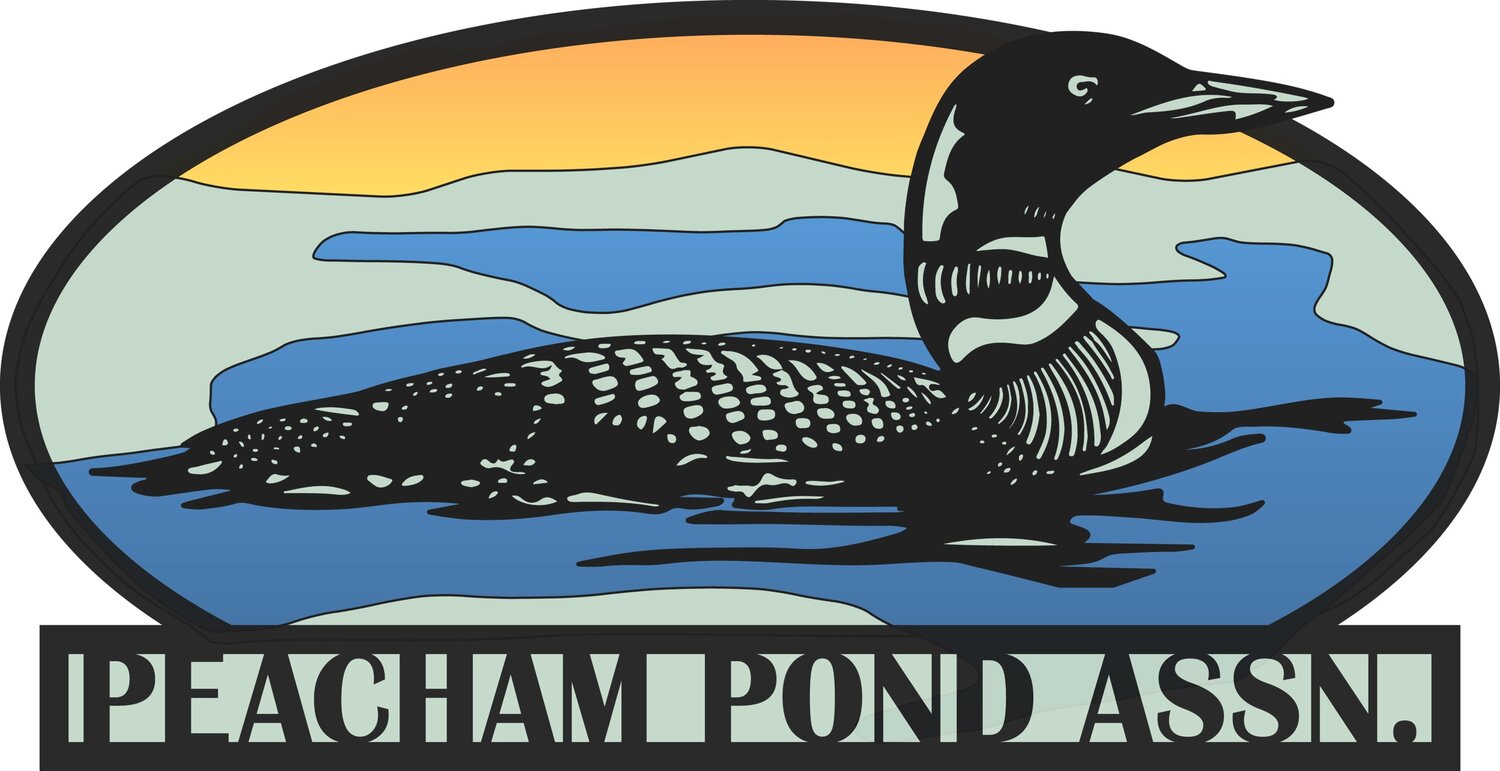
environment
Peacham Pond Public Access Greeter Program
Our Greeter Program is one of thirty-two throughout the state of Vermont. These programs operate at public boat access areas. The goal of this program is to educate the public about aquatic invasive species (AIS), prevent AIS from entering waterbodies, and collect general information about lake or pond users. Greeters inspect boats, trailers, fishing wells, anchors and engines, looking for AIS. These can be small bits of aquatic plants, like eurasian milfoil or curly pondweed. Greeters also check and drain standing water in boats and engines where zebra mussel seeds or spiny waterflea can be transported. Once invasive species enter a body of water, they can quickly establish populations that are nearly impossible to eradicate. A Greeter is the first line of defense to keep our waters clean.
Some Greeter programs operate every day of the summer season, complete with Greeter sheds and hot water wash stations. Peacham Pond’s Greeter, Priscilla McCormick-Sampson, is stationed for eight hours on weekends and holidays from Memorial Day until Labor Day. We have been fortunate to have an excellent Greeter for all three summers since our program began. Our Greeter makes sure our pond visitors are logged and their watercraft inspected. She also demonstrates how to “clean, drain and dry” watercraft before entering the pond and again on retrieval.
To pay for this program, the Peacham Pond Association partners with the Town of Peacham each January to write a grant for state funds. While the approximate $3,000 grant currently covers the majority of our Greeter’s salary, the state’s resources are static and are tapped by increasing numbers of AIS projects. If we want to be proactive and add more days or hours to the monitoring of our boat access, we will need to fund more of this program ourselves.
In 2020 we asked our association members to begin contributing to a fund earmarked for our Greeter Program. We were thankful to receive $1,135.00 by the end of 2020. These funds will ensure our Greeter program can survive and grow, providing the best protection for Peacham Pond against aquatic invasive species.
Annual Number of Watercraft
2018 - 240 watercraft
2019 - 250 watercraft
2020 - 416 watercraft
2021 - 392 watercraft
2022 - 384 watercraft
2023 - 301 watercraft (107 motorboats, 130 kayaks, 15 canoes, 46 paddleboards, 1 rowboat, 1 sailboat, 1 inflatable)
Be part of the team!
Learn to identify non-native plants.
Before launching your boat, check the kiosk to see what species to look for.
Did you know that it is illegal in the state of Vermont to transport aquatic plants?
Eurasian Water-Milfoil can eliminate native plants & reduce water oxygen levels.
Check out the Aquatic Invasive Species Control efforts to understand the significant amount of time, energy, and funding eradication requires to control the spread of an invasive plant. Please help educate others on how we can work together to keep our waters clean and free of invasive species.
Have you ever wondered what Eurasian milfoil looks like? Or how it can impact our pond? Watch this video to learn about the stress and ongoing mitigation problems that come with an invasive species.
Above is a list of Vermont’s high-priority aquatic invasive species according to the VDEC.
lay monitoring and our lake scorecard
Peacham Pond has had an active Lay Monitoring Program since 2001. Every summer a volunteer team goes out eight to ten times to monitor and sample the water. To begin, a secchi disk is lowered into the water to measure clarity. Two, deep water samples are run through filters to measure for chlorophyll and total phosphorus. Next, the samples are sent back to the Vermont Department of Lakes and Ponds for further analysis. At the end of the year, this information becomes part of our Lake Scorecard (pictured below).

Looking at our Lake Scorecard, we can see how the health of our pond is changing over time. Phosphorus levels (TP) are especially critical as high phosphorus encourages algae blooms and aquatic plant growth reduces water clarity and depletes oxygen levels in our pond. Much of the phosphorus in our pond originates from people and their properties along the shoreline.
Please see the ideas below to help reduce this damaging trend:
Do not use fertilizer on lawns or gardens near the pond. (Unless specified to be phosphate-free)
Maintain septic systems. Pump out every 3-5 years or more if needed. Old and damaged drain fields can leach into the pond.
Do not use any type of soaps, cleaners, or chemicals that may wash into the pond.
Clean up pet waste.
Have a “no mow” zone along the shore. This helps rainfall filter down into the soil instead of run-off into the pond.
IMPORTANCE OF OUR SEPTIC SYSTEMS
“Adequate treatment of household waste from camps is critical to maintaining lake health. While it is not the only potential source of pollution to a lake, a poor septic system can introduce both nutrients and pathogens to a lake. The effects may be especially noticeable locally in the form of increased plant and algae growth offshore of a camp.”
SOURCE: Septic SYSTEM Primer, lAKE WISE PROGRAM
The Peacham Pond waterfront community consists of camps and homes of all sizes and ages.
Working with experienced septic experts and maintaining your system, whether old or new, is a must for protecting the health of our pond.
More information can be found in ‘A Homeowners’ Guide to Septic Systems’ provided by U.S. Environmental Protection Agency.


